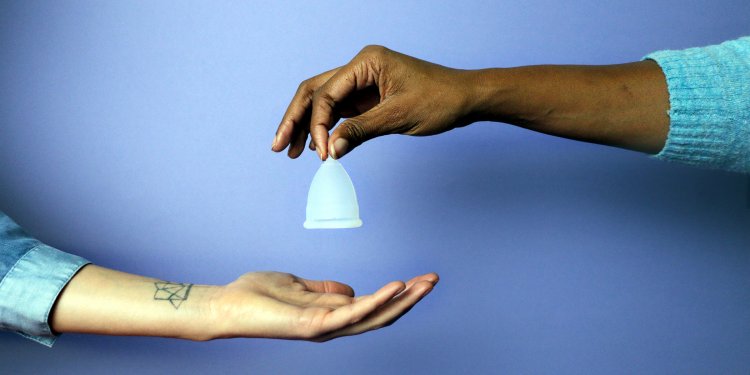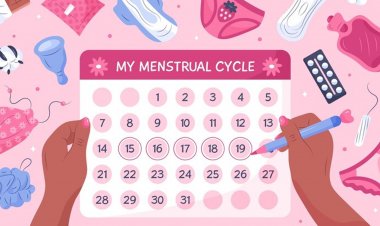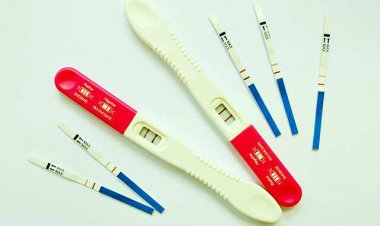How to use menstrual cup?
What is a Menstrual Cup? Know complete information about how women should use menstrual cups during periods.

You must have used pads during periods, but apart from pads, menstrual cups are also being used nowadays. Some women are not aware of it and some of the women who are aware do not like to use it. Maybe there could be some reasons behind it like how to use it properly or not feeling convenient. So you should know how to use the menstrual cup.
What is a Menstrual Cup?
A menstrual cup is a small, flexible funnel-shaped cup made of rubber or silicone. It is used in periods to collect period fluid by inserting it into the vagina. Nowadays women are using a menstrual cup. This cup can collect more blood than other methods. These cups come in different sizes.
Depending on your flow, you can wear one cup for up to 12 hours. Women choose to use this cup as an eco-friendly alternative. You should choose the right cup based on the measurements of your vagina and cervix. These cups do not absorb your menstrual flow like tampons or pads. If you are sensitive to latex, this does not bother you, so you can use it.
During periods you can use a cup but with the heavy flow, it may need to be changed more often. Some brands are disposable, so a person can throw them away after each use or menstruation. A person can wear the cup for 6 to 12 hours before removing and rinsing the cup to use again. Those who have a heavy menstrual flow may need to empty their cup more often.
How to Use Menstrual Cup -
How to Use Menstrual Cups You must first find out what size cup you need.
You and your doctor should consider the following to determine the right menstrual cup size.
- How old are you
- Do you have heavy flow or not
- The length of your cervix
- Cup strength and flexibility
- What is the capacity of the cup
- The strength of your pelvic floor muscles
- You have a smooth delivery
Small menstrual cups are generally used only for women under the age of 30 who have not had a normal delivery. Larger cups are used for women over the age of 30, who have had a normal delivery or have more periods.
Using a menstrual cup for the first time can feel uncomfortable. But "greasing" your cup can help smooth out the process. Lubricate the rim with water or a water-based lubricant before applying the cup. Wet menstrual cups are very easy to put on.
Follow the steps below to use the cup:
- First of all wash your hands thoroughly.
- Now apply water or water-based lube to the rim of the cup.
- Fold the menstrual cup tightly in half, holding it in one hand with the rim facing up.
- Insert the cup into your vagina, rim up like you would a tampon without the applicator. It should be located a few inches below your cervix.
- Once the cup is in your vagina, rotate it. This will open to form an airtight seal that prevents leaks.
- If the cup is fitted correctly, you should not feel your menstrual cup. You should be able to stand, walk, jump, sit, and perform other daily activities without dropping your cup. Talk to your doctor if you're having trouble fitting your cup.
How to use a menstrual cup for beginners
First, you have to put the cup in your vagina rim up. Just as a tampon is done without the applicator, make sure that it is inserted a few inches below the cervix. After the cup is inserted into the vagina, swish it slightly; the cup opens slightly to create an airtight seal that prevents leaks.
How to fix a menstrual cup
If you are having difficulty in putting it on then follow the method given below to know how to fix the menstrual cup.
The cup can also move up and down in the vaginal canal during the menstrual cycle. This happens depending on the level of estrogen. If the rim of the cup is not below the cervix, then the menstrual discharge will flow down the sides of your cup causing leakage.
- Locate your cervix!
The height of the cervix can change throughout the menstrual cycle, so check the position at that time. To do this, a clean finger is to be placed in your vagina. Feel a slightly firm area of tissue. It should feel like the tip of your nose. - Place the cup under the cervix
After you've determined where your cervix has been set for your period, you'll know exactly where your cup should be. But it is normal that your cervix may move throughout your period, so it is easier to check the position with a cup shortly before your period. - Angle the cup
The angle is towards the back of the body. To determine if your cup is positioned correctly, use your thumb to angle it toward your tailbone to tilt it in the right direction. - The cervix is not inside your cup
If you have placed the cup in such a way that it is directly on your cervix, there can be two types of positions that can also lead to leakage and cramping or discomfort, so try different positions to get the right position for your body. Try it out.
How to remove the menstrual cup without pain?
To avoid the danger of the menstrual cup, it has to be removed easily. You have to try something like this.
- Be patient
Sometimes the cup can move up the vaginal canal. It is completely normal if the cup moves up into the vaginal canal and becomes difficult to reach, just push down with your abdominal muscles (similar to a bowel movement) in a series of motions. Do not pull the cup out of the stem. Use it as a guide. - Squat
If you still can't reach the cup, sit on the floor or lift one leg up and rest your foot on the toilet seat. This will help lower the cup and make it easier to reach. - Take it easy
When inserting the cup, make sure you are in a relaxed position while removing the cup so that your vaginal muscles are not tense so take the time to try inserting and removing twice before starting your cycle. - Hold on
Make sure your hands are clean and your fingers are completely dry. This will give you a better grip on the cup. It may be helpful to reach the base of the cup with toilet paper for a good grip. Pull the stem into the vagina until you reach the base of the cup. Pinch the cup as high as possible (closer to the upper rim) and squeeze it for a few seconds to give the seal time to break. Take the cup out at an angle to the edge. It can be easily removed. - Break side seal
If the pinch and squeeze method doesn't work, you can put a finger on the edge of the cup and push it to break the seal.
Disadvantages of menstrual cups -
If you use it then there can also be disadvantages of the menstrual cup.
- may cause an allergic reaction
- can be messy
- can be difficult to put on or remove
- It can interfere with an IUD
- hard to find the right fit
- vaginal irritation
Conclusion:
Once you learn how to use a menstrual cup, it makes your job easy. If you are using it for the first time then you can consult your doctor, you just have to learn to apply and remove it properly then it will get easier every month.

 mybabycare
mybabycare 















